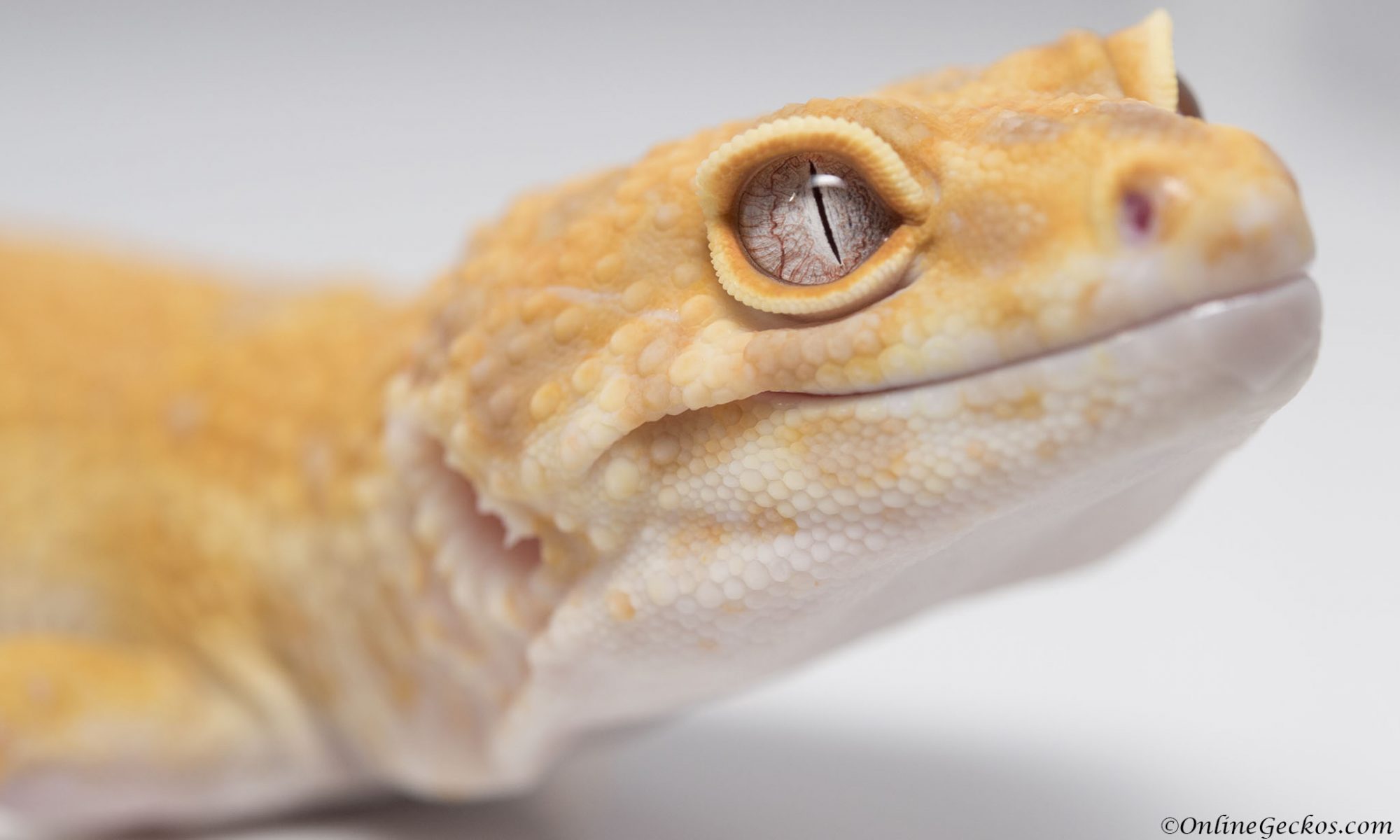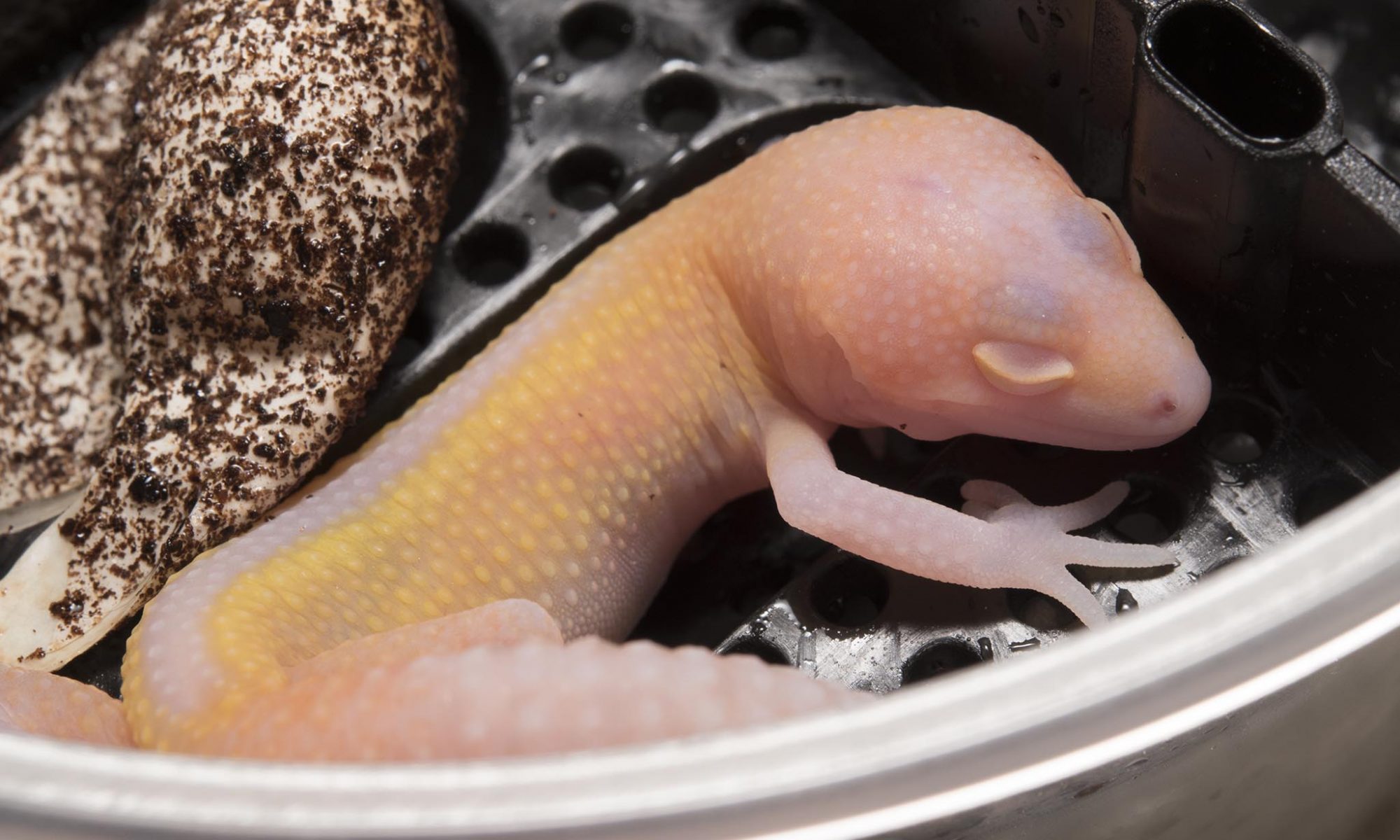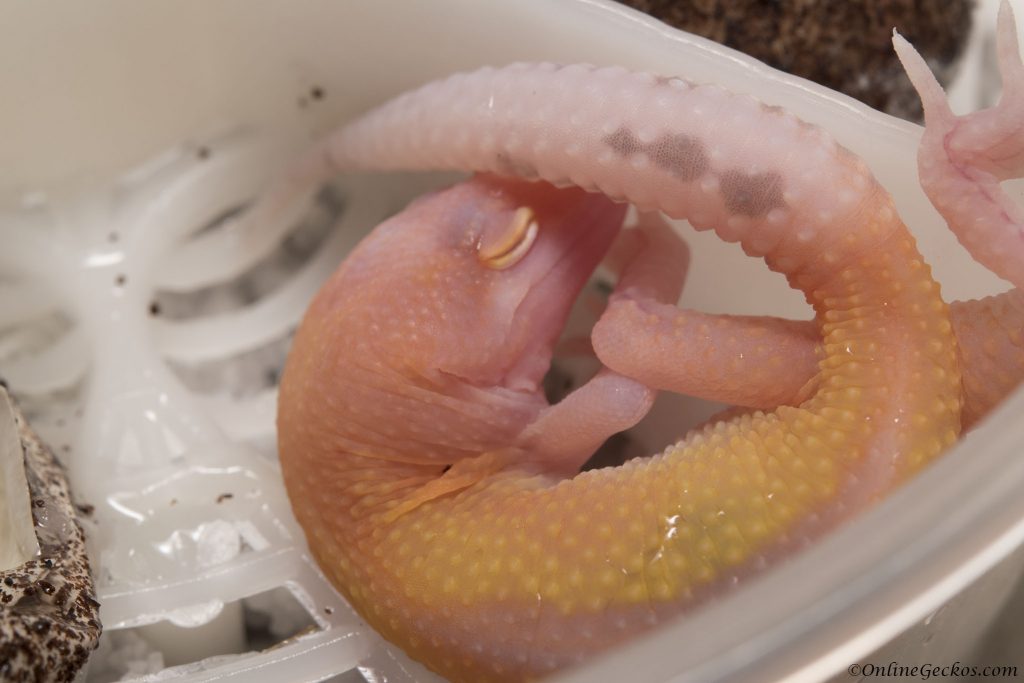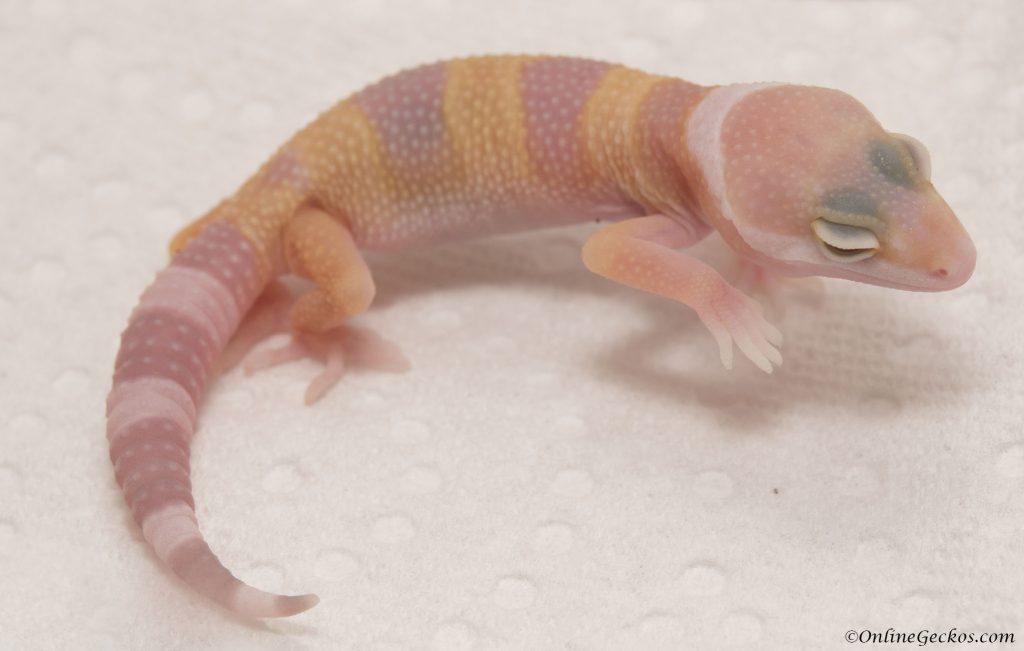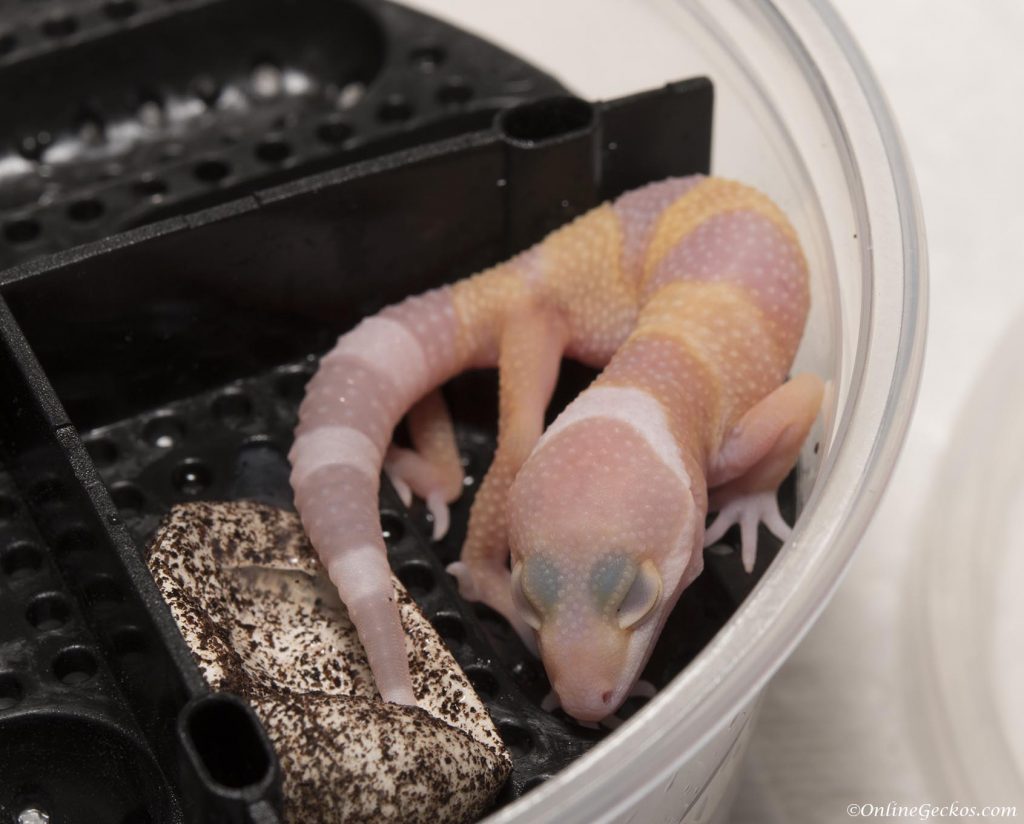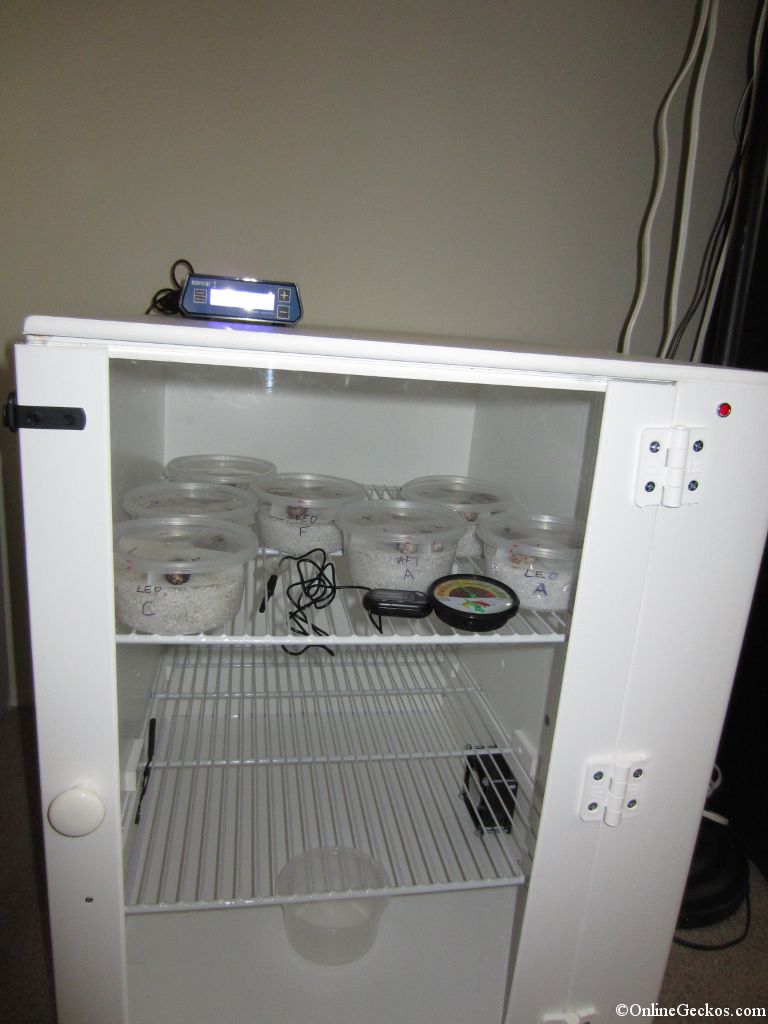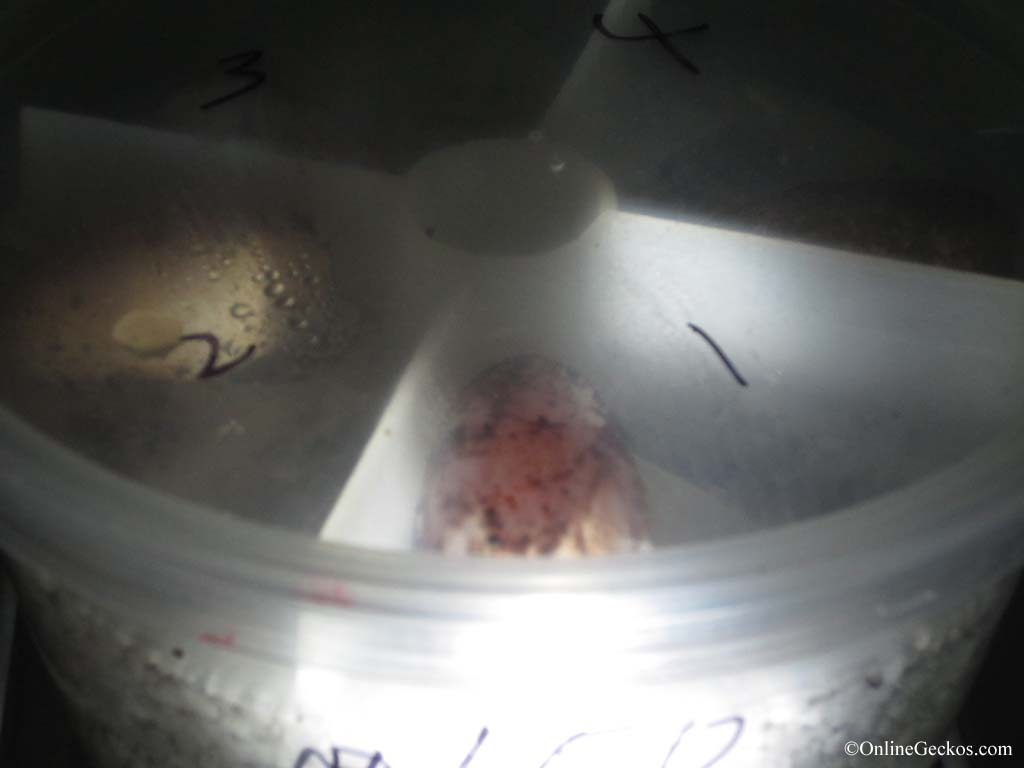Right on schedule, the Radar hatchlings are here! At OnlineGeckos.com, we were having a race to see whether our Tremper or Bell projects were going to hatch first. The eggs were laid roughly at the same time. The Tremper projects won as last week two beautiful super giant leopard gecko hatchlings were born. Once that happened, we knew the Bell albino projects were coming next.
First Radar Hatchlings of 2017
These are not clutchmates (one male one female), but they share similar traits as both are from the same parents. You’ll notice the very distinct reverse stripes down their backs. This is a trait passed down from our male breeder, Kronos. We absolutely love the reverse stripes, and we breed for it specifically.
Radar Hatchlings – Genetics
Radar is Bell Albino + Eclipse. This combination gives them ruby red eyes. We love working with Bell Albinos. When we first got into breeding in 2011, the very first leopard gecko we hatched was a bell albino het radar. So we’ve been working with Bell albinos since the very beginning. We still have our first boy, he’s quite photogenic, you may have seen him on our site before. Continue reading “Hello Bell Albinos! Leopard Gecko Radar Hatchlings of 2017”
